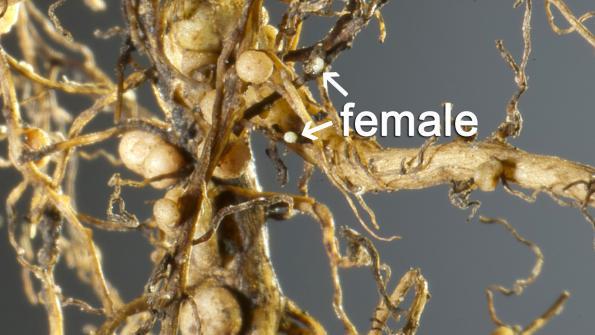October 2nd is recognized as National Nematode Day, a pivotal time for testing fields for soybean cyst nematode (SCN), the leading pathogen of soybeans in the United States.
Mandy Bish, a plant pathologist and director of the SCN Diagnostics clinic at the University of Missouri Extension, emphasized the importance of identifying problematic areas during this fall to aid in 2024 planting decisions. “We anticipate the highest SCN levels to occur at the end of the season,” said Bish.
The SCN Diagnostics clinic has collaborated with the Missouri Soybean Merchandising Council to offer Missouri farmers four complimentary SCN egg count tests this autumn. Despite the roots of the soybean being infected with SCN, the plants often appear healthy above the ground. However, Bish noted that the severe drought during the 2023 season may have revealed some problematic areas, with patches of yellow soybean appearing in numerous fields this year due to multiple causes, including potentially high SCN levels. A soil test will assist in determining whether SCN pressure is contributing to the problem.
To determine the presence of SCN, soil samples should be collected in fields that were:
• Sampled over three to five years ago.
• Known to have SCN populations.
• Having a history of sudden death syndrome of soybean.
• Where soybeans are not rotated with corn.
Bish explained that sampling for SCN differs from sampling for other purposes, with recommended soil cores being 1 inch in diameter by 8 inches deep.
For over thirty years, growers have depended on a soybean line, PI 88788, as the primary defense against SCN, with more than 95% of commercial varieties grown in Missouri having PI 88788 resistance. However, recent studies by MU soybean researchers discovered that some juvenile nematodes could feed on PI 88788 soybeans and still mature into adult females.
The SCN Coalition suggests four methods to manage SCN:
• Testing fields to “know your numbers.”
• Rotating resistant varieties.
• Rotating to nonhost crops.
• Considering the use of a nematode-protectant seed treatment.
Bish remarked that sampling could be challenging due to the non-uniform appearance of nematodes in fields. The SCN Coalition recommends dividing fields into sections of 10-20 acres using natural boundaries and collecting 15-20 soil cores from each section of the field.
For sample submission and more detailed instructions, refer to the links provided in the notes. For additional information, contact the clinic at [email protected].
SCN Diagnostics is a joint initiative between the University of Missouri and MU’s College of Agriculture, Food and Natural Resources. Ongoing research by Bish and other MU researchers is focusing on how in-season management practices impact SCN levels.


